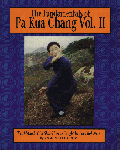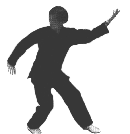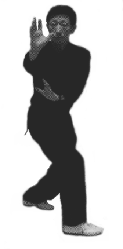| In teaching his students, Tung Hai
Ch'uan took
into account each student's martial arts background, character, size,
aptitude,
ability, personality, age, and physical condition. Because he
taught
each student differently, based on that student's unique qualities,
every
lineage of Pa Kua Chang existing today has its own "flavor." Even
fundamental components of the art, such as the "Eight Mother Palms,"
are executed differently in each lineage. Tung's formal students
and grand-students all approached the transmission of their art in the
exact same manner as Tung himself. They taught each student in the
traditional
way -- a natural way that was unique to that student.
Unfortunately, in recent times, many
instructors
have begun to "standardize" the Pa Kua forms and teach the same exact
choreographed
routines and fighting applications to all of their students, regardless
of their students' differences in size, aptitude, and character.
This fixation on form and misunderstanding of tradition serves only to
constrain the art and severely limits the
level of mastery an individual student can attain. |






